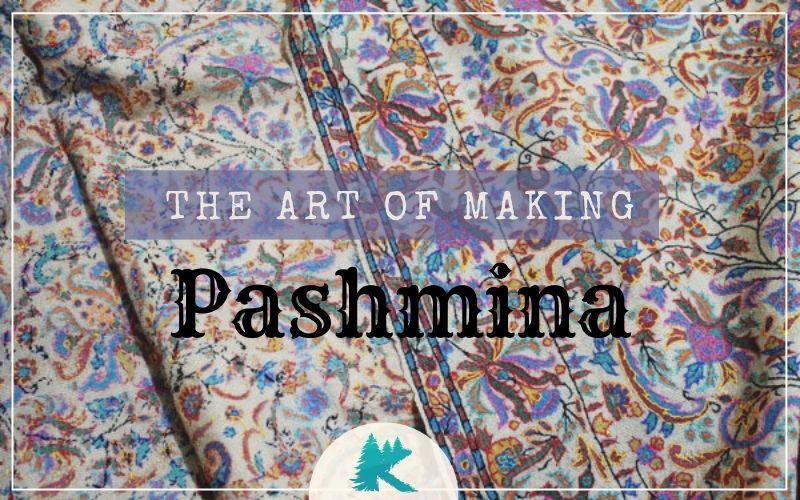Blog
The Art Of Making Pashmina!

The word Pashmina comes from Persia: Pašhmina which translates to “Made of Wool”. The materials produced using this fiber were first woven in Kashmir. The fleece is cut from the underside of goats that are local to Ladakh and are known as Changthangi or Kashmiri pashmina goats.
What really makes the pashmina special apart from its high quality and exclusivity, are the artisans who make it. This is because the skill of making a pashmina shawl is passed down from one generation of weavers to another. The making of a handloom pashmina is done in 5 steps
1)Combing & sorting
2)Weighing & Seasoning
3)Spinning
4) Washing & dying
5)Weaving
It can take anywhere between a few months to years to make a pashmina shawl. In the winter the goat’s fur regrows and by the spring season, it is ready to be harvested. These processes might seem standard at first but they can’t be replicated. There have been two instances in the 1800s when the British tried to export pashmina goats to the United Kingdom. The first time was when after the first anglo-Sikh war the British stipulated that Gulab Singh give them an annual tribute of 12 pashmina goats. Decades prior, William Moorcroft, headed out to Kashmir trying to empower Britain to break the Kashmiri dominance on pashmina production. As opposed to attempting to make arrangements with the Kashmiri weavers and the shepherds, Moorcroft chose to get a populace of the Changthangi goats for England. Having gotten 50 goats, authorities made the choice to put each one of the females on one boat and the males on another. Tragically, the boat conveying the females never reached England and consequently, a populace of around 25 male Changthangi couldn’t reproduce.
The step-by-step process of How pashmina is made
1)Combing & Sorting – The goats have to be combed under the fleece of their coats. Combing has to be done in a very specific way and at a specific time. They have to be combed gently and done when the goat’s hair has already started to shed. The weather also has to be ideal as the wool has lots of microfibres. Sorting of the pashmina has to take place before processing. In this procedure, the low-grade pashmina is separated from the fine fibers and any chemical or natural impurities are removed. This preserves the purity of the pashmina and also breaks down the fibers into their colors.
2)Weighing & Seasoning – Weighing pashmina is crucial as its fibers are very fine, in fact, finer than a human strand of hair. Usually, a pashmina shawl weighs only 200 grams. The correct season is very important to acquire the best pashmina, as the wool naturally comes loose during the spring season.

3)Spinning- Pashmina is spun on a charkha and is always done locally. As it is a rare and exclusive material, it gets acquired and processed locally. On the charkha, the pashmina is spun into yarn.

4) Washing & dying –Pashmina has to be washed off any impurities which may be settled in it. This is a very labour-intensive task and requires multiple artisans to cross-check the purity. The dying process is crucial among the processes, it is only undertaken by the most experienced artisans to avoid any mistakes that cloud potentially ruin the fabric and a year of hard work. Natural dyes are used to ensure that the quality of pashmina is not adulterated. After dying, a natural glue is used to stick the strings together. This makes them strong enough to bear the weaving. It is later washed off.

5)Weaving the pashmina – Before the pashmina is woven it is made into a wrap using traditional techniques. The weaving is performed on a special handloom and only by the most skilled artisans. Once the pashmina is woven, it does not need any additional touches or furnishings.

This whole process is the reason why pashmina shawls are so expensive. If it’s not expensive, it’s not pashmina. As with any elite product, these are bound to be duplicated. If you are getting a pashmina shawl for 10 dollars, you are not getting a pashmina. There is also the factor of demand and supply, as the supply of pashmina is limited, the demand is always high. The pashmina can last for a very long time but requires adequate care. It’s not produced on the level of fast fashion goods or mass-produced items. Each pashmina shawl is unique in its own way and you will never find two pashminas that are exactly the same. This makes the production of a pashmina art.

